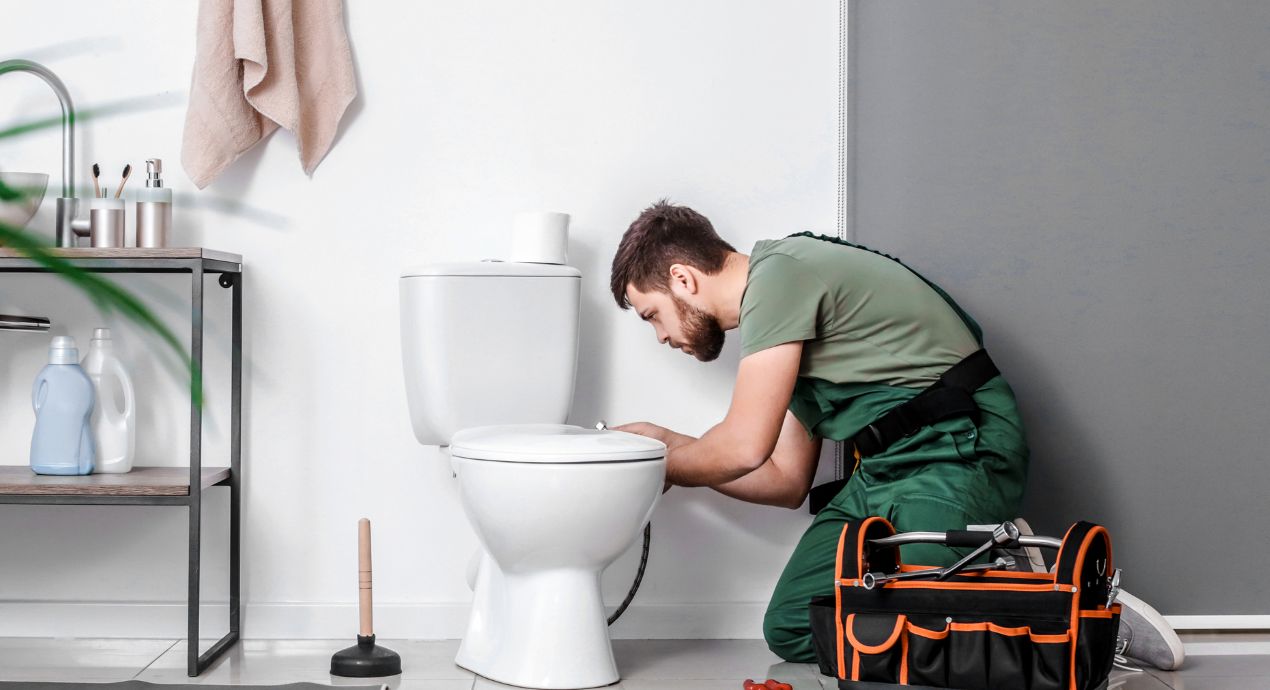
Contemplating coverage?
Subscribe to receive our emails & get
$200 off!
Have questions?
Call us: (833) 544-8273


Written By Ryan Merchant
What home appliance doesn’t have some smart variation these days? We’ve quickly moved from smart phones and smart televisions to smart refrigerators and smart… toilets? A smart toilet system may not be everyone’s priority—if it ain’t broke, as they say—but if you’re inclined to embrace new technology, you might be surprised at the added luxury that a smart toilet can bring to your home.
Here’s all you want to know about smart toilets—even if you were afraid to ask.
There's a reason Liberty Home Guard was rated the #1 Home Warranty
Service by U.S. News and World Report for 2021, 2022, 2023, and 2024. Check out our services.
A smart toilet is toilet that functions like any other, but it uses electronic technology for a range of luxury, health, and environmental applications. Many smart toilet models have integrated bidets as well.
Electronic toilets have been around for more than 20 years, but they have only recently become more in demand in the United States. As we’ve come to expect more from our appliances, a multipurpose smart toilet is a natural addition to the modern bathroom.
There are countless models of electronic toilets from a range of manufacturers. The features on one smart toilet may not necessarily appear on another, but here are some common functions and attributes:
A smart toilet requires maintenance and care, just like any other home appliance or plumbing fixture. Even if your model is self-cleaning, periodic manual cleanings are necessary. Avoid using harsh chemicals or excess water on or in proximity to electronic components. You can clean porcelain surfaces just as you would on a traditional toilet. For detailed care instructions, of course refer to the manufacturer’s specifications.
Some electronic toilets also require filter changes. This could be a deodorizing carbon filter or a water filter. As a rule of thumb, filters need to be changed every six months or so, but—again—defer to the manufacturer's recommendations.
Traditional toilets do not require electric power to function. If your home has an electric well pump, then your toilet tank will not refill after flushing, but you can still manage to flush a traditional toilet by pouring a bucket of water into the tank.
A smart toilet, of course, requires electric power. In the event of a power failure, nearly all functions will cease to operate. Some models have an emergency flush function, however, and can still be used during a power outage. As with traditional toilets, you may need to manually refill the toilet tank. The viability of a smart toilet during a power outage varies from model to model. If your home is prone to power failures, invest in a model that has an emergency flush feature.
A smart toilet costs considerably more than a standard toilet. You can buy a traditional toilet at a home supply store for less than $200. If you have a plumber install it, your total cost might be $400–$500. A somewhat basic smart toilet can cost $1,000. High-end models can go for $5,000 or more. Smart toilet installation can be more involved as well. It’s not only a matter of hooking up the toilet to the home’s plumbing system. There is an electrical component as well, and that may mean opening up the bathroom walls to run electrical wire or installing an electrical control panel above the toilet. This specialized work can quickly inflate the cost of installing a smart toilet.
The added comfort and modern styling of a smart toilet may justify the higher price for you, but if keeping a tight budget is a priority, a traditional toilet may be the way to go.
Whether you upgrade your home to include electronic toilets or stick to the traditional models, you can invest in home warranty protection to affordably maintain and repair your home’s plumbing system. If your toilet’s tank, bowl, seals, or operating mechanisms need to be repaired or replaced, Liberty Home Guard has you covered. Our plumbing system protection also covers showers, built-in bathtubs, stoppages, and leaks or breaks in water, drain, and waste lines.
We offer plumbing protection as part of our System Guard plan, which also includes coverage for electrical, HVAC, and water heating systems. You can also invest in our Total Home Guard plan, which folds in coverage for a suite of home appliances. Use our website for a free quote or call (866)-432-1283.
Stay Ahead of Potential
Home Mishaps!
Subscribe to our Liberty Home Guard Newsletter and gain access to exclusive content that ensures your peace of mind.